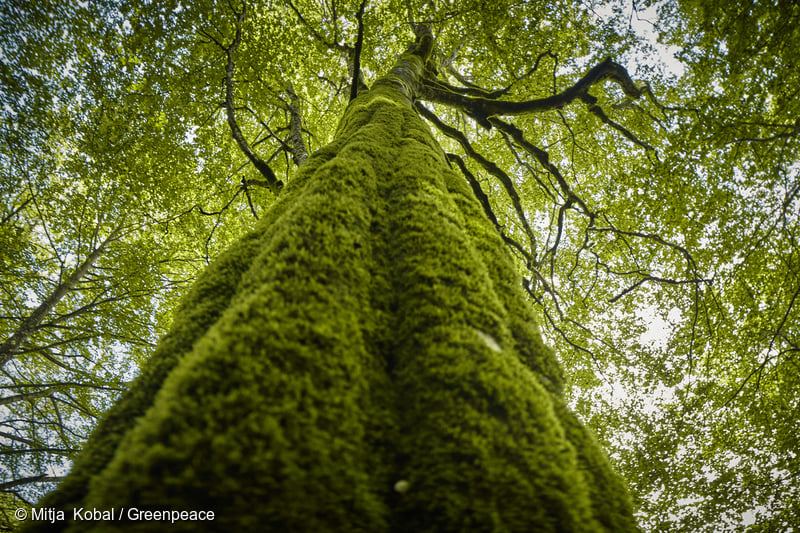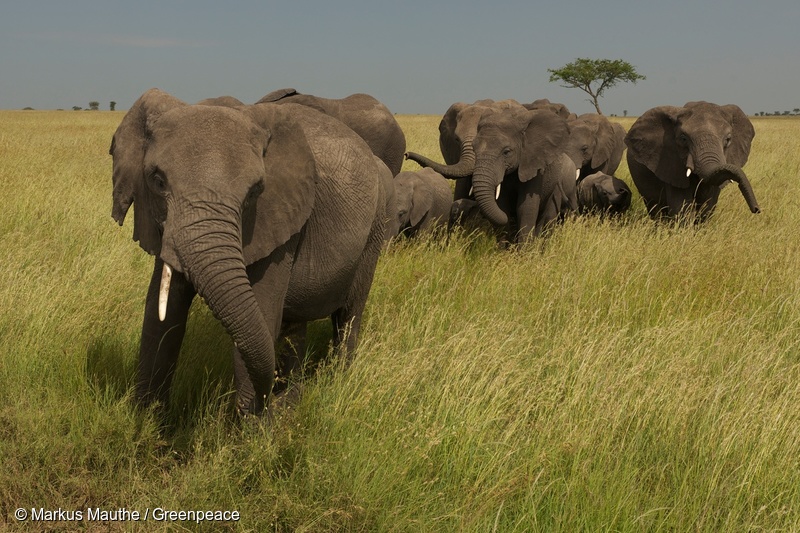
Today is International Day of Biological Diversity, so let’s celebrate all the amazing species that populate our planet while we still can.
Right now, we are facing a biodiversity crisis: 1 million species are at risk of extinction, according to the UN’s biodiversity report. This is a devastating reality check, and not only a crisis for nature, but for humanity as well.
So what are we doing about this crisis? Greenpeace is taking action across the world from Indonesia to Antarctica to protect endangered species. We hope you can stand with us to fight for those who can’t speak for themselves.
Check out these stunning images to celebrate our natural world. This is what we stand to lose if we don’t act now:

Bees and other auxiliary species thrive in the ecological farms in France.
Forests are home to 80% of terrestrial biodiversity, and they are quickly fading away. Boreal forest is home to more than 20,000 species of animals and plants. Protecting forests will save species from extinction.

Brown bear in Swedish boreal forest.

Scarlet Ibis Fly Over the Biological Reserve of Piratuba Lake in Amapá, an area threatened by oil exploration.

Moss on tree in Carpathian forest, Romania.
In Africa, the savanna is able to sustain vast amounts of living species. The biodiversity is linked to the well-being of communities whose survival depends on it. Climate change, poaching, plastic, logging and industrial farming are all placing the natural ecosystems at severe risk. Safeguarding the animals and plants is vital to the health and wellbeing of the environment.

Flamingos in the Savanna in Tanzania, Africa.

Elephants in the Masai Mara Savanna, Kenya.
In Asia, forest destruction for palm oil is pushing species like Sumatran orangutans and tigers to the edge of extinction. Companies need to enforce their “No Deforestation” commitments and face up to the climate crisis they created.

One year-old baby orangutan plays on the tree at Borneo Orangutan Survival (BOS) Foundation in Indonesia.

Tigers in Tadoba Reserve, India.

Deer at the Kanha National Park, Central India.
The Arctic and Antarctic support an abundance of incredible life found nowhere else in the world, but a warming climate and expanding oil industry are threatening its vital oceans and sea ice. Greenpeace is working to protect the poles, its wildlife and its people by campaigning to keep fossil fuels in the ground. This means telling all companies and governments that the poles — and their oil — is off limits forever.

Polar Bears wandering over the snow. Cape Churchill, Hudson Bay, Canada.

Chinstrap penguins on Half Moon Island, in the South Shetlands of the Antarctic.
Oceans sustain all life on earth. We are calling for at least 30% of the world’s oceans to be protected as ocean sanctuaries by 2030, to protect wildlife and tackle climate change.

Humpback whales, enjoy the warm waters of the Pacific ocean, Tonga.

Hawksbill Turtle in Komodo National Park. A critically endangered hawksbill turtle swims over the coral gardens at Kanawa Island near Flores, Indonesia.
We cannot save the climate without saving biodiversity and vice versa. If we fail to protect the natural world, we lose our biggest asset in the fight against climate change.
Biodiversity is what makes life possible. It’s what makes life worth living. But today, we are going through what scientists are calling the 6th mass extinction. Deforestation, degradation, and exploitation are causing species after species to disappear. If our planet is to sustain life on earth in the future and be protected from environmental destruction, we need action from governments to protect our living, breathing oceans and forests and to halt biodiversity loss. Humans have caused it, but we also have the power to stop it.
So, what can you do now?
Stand with us. We have a bold and brilliantly simple ocean rescue plan: we cover the planet in ocean sanctuaries, putting a third of the oceans off-limits to fishing, mining and other destructive industries.
If the rescue plan goes ahead, it’ll be one of the biggest conservation efforts in human history, creating millions of square kilometers of new protected areas. Governments have already started work on a UN Ocean Treaty, and if they get it right it’ll give us the tools we need to make these sanctuaries happen.
But because sanctuaries work so well, the people who profit from exploiting our seas are working hard to water down the treaty. It’s up to us to make sure nature and ordinary people have a voice in this too.
Add your name to our petition to support the global ocean treaty.


